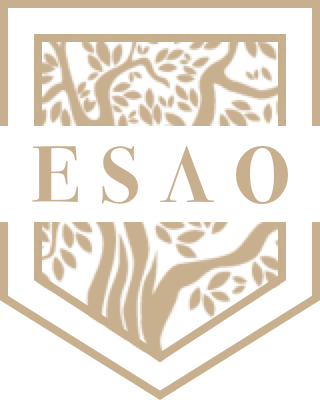Olive Oil, an ancient and essential product in global gastronomy, has been at the center of attention due to a series of trends, challenges, and opportunities shaping its market and industry.
In this article, we will explore in detail the main issues impacting the world of Olive Oil, from price evolution to the rise of premium and organic segments, as well as the importance of consumer education and the analysis of production yields.
Increase in Olive Oil Prices: Causes and Consequences
The notable increase in olive oil prices has been a highlighted topic recently, resulting from a series of interrelated factors. These include decreased production due to adverse climatic conditions such as prolonged droughts, heatwaves during flowering, and rising production costs.
This situation has raised concerns across various sectors, from educational institutions to producers themselves.
The reduction in supply has caused a rise in product prices, impacting demand and creating economic challenges for the industry.
This increase affects not only producers but also end consumers and the food industry in general. Consumers may face restrictions in accessing this staple ingredient in many kitchens due to its high cost, which could influence their preferences and purchasing habits, despite the high loyalty shown towards high-quality Extra Virgin Olive Oil.
On the other hand, companies using olive oil as a component in their products face increased expenses, which could affect their profit margins and competitiveness in the market.
In this sense, high olive oil prices present a challenge for supply chain participants and consumers, who must adapt to this new economic reality.
An example of this price increase was experienced specifically in the 22/23 and 23/24 campaigns, although a slight reduction began in the latter. The 22/23 campaign saw historic price increases.
Impact on Training and Education in the Olive Oil Sector
Training and education in the olive oil sector play a fundamental role in understanding production processes, product quality, and its nutritional value.
However, this aspect has often been underestimated, considered more as an expense than an investment.
In this context, the Olive Oil School of Spain (ESAO) has taken on the challenge of raising awareness among producers and consumers about the importance of training in improving the sector's quality and competitiveness.
Investment in training is seen as a key element to face challenges and seize opportunities offered by the olive oil market.
Training and education in the olive oil sector cover a wide range of topics, from agricultural management and cultivation technology to production, tasting, and marketing.
Training programs for producers can include practical aspects such as pruning and harvesting techniques, as well as theoretical knowledge about the chemical composition of olive oil and quality standards.
On the other hand, consumer training can focus on health and nutrition aspects, as well as the sensory appreciation of olive oil and its use in cooking.
In this sense, training and education in the olive oil sector are key tools to promote quality and excellence throughout the value chain, from the field to the table.
Trends in the Premium and Organic Olive Oil Market

The olive oil market has experienced steady growth, especially in the premium and organic segments.
The increasing demand for high-quality and sustainable products has driven this trend, with a particular focus on emerging markets such as the United States, China, and Latin America.
The recognition of the health benefits of Extra Virgin Olive Oil and the popularity of Mediterranean diets have contributed to this growth. Additionally, the organic market has seen significant growth in Europe, reflecting greater consumer awareness of health and environmental issues.
These trends offer opportunities for producers and companies looking to differentiate and add value to their products.
The growth of the premium and organic segments in the olive oil market reflects an evolution in consumer preferences and habits.
More and more people are seeking high-quality and reliable origin products, leading to increased demand for Extra Virgin and organic olive oils. These products are distinguished by their intense flavor, fresh aroma, and health benefits, making them an attractive option for quality and sustainability-conscious consumers.
Moreover, the premium market offers opportunities for innovation and differentiation, with exclusive products and limited editions that attract consumer segments willing to pay a higher price for a unique experience. In this sense, the premium and organic olive oil market represents an area of growth and development for producers and companies looking to position themselves in the highest value-added segment.
Production Yields in Olive Oil: Factors and Considerations
Yields in olive oil production are a crucial aspect affecting both economic efficiency and the quality of the final product.
From the choice of olive varieties to cultivation practices and the extraction process, various factors influence the achieved yields. Precision in measuring yields on a dry matter basis is fundamental for accurate evaluation and consistent comparisons between different batches and varieties. Additionally, yields have a significant economic impact on production costs, market prices, and international competitiveness.
Understanding these factors is essential to optimize production and maximize profitability in the olive oil sector.
Production results in olive oil can be affected by a range of internal and external factors.
Internal factors include planting density, irrigation system, fertilization, and pruning, which can influence the quantity and quality of the harvest. On the other hand, external factors such as climatic conditions and pest and disease attacks can affect the health and performance of the olive trees, requiring appropriate preventive and management measures.
Moreover, the olive oil extraction process, which includes crushing, malaxation, and centrifugation, can influence the quantity and quality of the final product as well as the process efficiency.
In this sense, optimizing yields in olive oil production requires a comprehensive approach encompassing all aspects of cultivation and product processing, from the field to the mill.
Germplasm Banks for Olives and Olive Oil: Preserving Biodiversity and the Olive Industry

The germplasm bank is an invaluable genetic reserve aimed at safeguarding the biodiversity of these important agricultural species. These banks play an essential role in the conservation of native varieties and the improvement of the olive industry worldwide.
Located in different countries and regions, olive and olive oil germplasm banks house an impressive genetic diversity. For instance, the Olive and Olive Oil Germplasm Bank at the University of Córdoba (Spain) has over 1000 registered varieties, while the Olive and Olive Oil Germplasm Bank at the University of California, Davis (USA) holds over 400 genotypes. These banks are fundamental for biodiversity conservation and offer opportunities for research and the development of new varieties.
Olive and olive oil germplasm banks perform various functions, from biodiversity conservation to research and genetic improvement.
Additionally, they play a crucial role in supporting the olive industry by providing access to a wide genetic diversity to improve the quality and variety of derived products.
It is essential to recognize the importance of germplasm banks and their contribution to the preservation and sustainable development of the olive industry globally.
Their work not only ensures the survival of valuable genetic varieties but also drives innovation and excellence in olive oil production.
Conclusions: Challenges and Opportunities in the World of Olive Oil
In summary, the world of olive oil is in a period of change and challenges, but also opportunities.
Price evolution, the rise of premium and organic segments, and production yields are some of the key issues shaping the future of this millenary industry.
Investment in training, product and process innovation, and attention to quality and sustainability are fundamental elements to leverage these trends and ensure a prosperous future for olive oil in the global landscape.
Furthermore, the preservation of biodiversity and the development of new varieties through germplasm banks contribute to strengthening the olive industry as a whole.
Ultimately, success in the world of olive oil will be determined by the ability of all involved to adapt and respond to the challenges and opportunities that arise. Only in this way can we move towards a more sustainable, competitive, and enriching future for this jewel of Mediterranean gastronomy and culture.
As always, we end with advice from Bill Gates, founder of Microsoft:
Investing in education and training is the best use of money.
When asked, "What is your best financial advice for people earning less than $100,000 a year?"
His answer was, «Invest in your education.»
.png)






